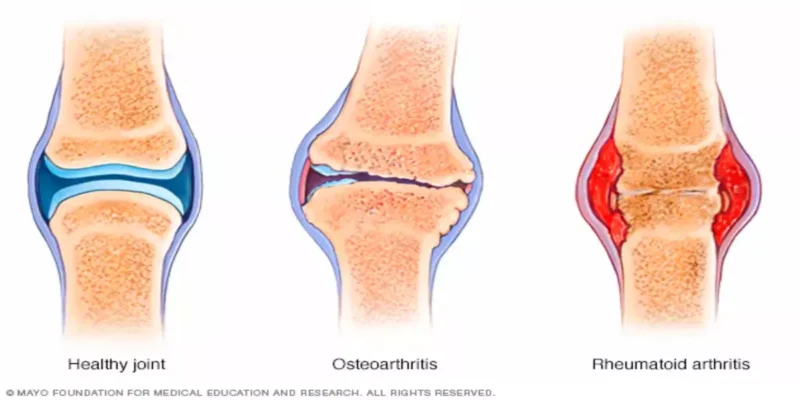Arthritis is a common condition that affects millions of people worldwide. It is characterized by joint inflammation, pain, stiffness, and reduced range of motion.
While arthritis cannot be cured, its symptoms can be effectively managed through various treatment approaches.
One crucial component of managing arthritis is regular exercise.
In this article, we will explore the role of exercise in managing arthritis symptoms and improving overall joint health.
Introduction
Arthritis can significantly impact an individual’s quality of life by causing pain, stiffness, and reduced mobility.
While medications and other treatments play a crucial role in managing arthritis, exercise is a valuable and often underutilized tool in the management of this condition.
Regular physical activity can help reduce pain, improve joint function, and enhance overall well-being for individuals living with arthritis.
Understanding Arthritis

Arthritis is a general term that encompasses more than 100 different types of joint diseases. The two most common types are osteoarthritis (OA) and rheumatoid arthritis (RA).
Osteoarthritis occurs when the protective cartilage in the joints wears down over time, leading to joint pain and stiffness.
Rheumatoid arthritis, on the other hand, is an autoimmune disease where the body’s immune system mistakenly attacks its own joints, resulting in inflammation and joint damage.
Benefits of Exercise for Arthritis
Engaging in regular exercise offers numerous benefits for individuals with arthritis. Some of the key benefits include:
Pain Relief: Exercise helps reduce joint pain by strengthening the muscles around the joints and improving joint support.
Increased Range of Motion: Regular movement and exercise can improve flexibility and help maintain or increase joint mobility.
Enhanced Joint Function: Exercise helps nourish the cartilage in the joints by promoting the flow of nutrients and lubricating the joints.
Weight Management: Exercise plays a crucial role in weight management, as excess weight can put additional stress on the joints.
Also Read: Managing Diabetes through Exercise and Lifestyle Changes
Improved Mood and Mental Well-being: Exercise releases endorphins, which are natural painkillers and mood boosters, promoting overall mental well-being.
Types of Exercise for Arthritis
There are several types of exercises that can benefit individuals with arthritis. It’s important to choose exercises that are suitable for your specific condition and level of fitness.
Here are some recommended types of exercises for arthritis:
Aerobic Exercise

Aerobic exercises, also known as cardiovascular exercises, involve continuous movement that increases your heart rate and promotes cardiovascular health.
Some suitable aerobic exercises for arthritis include:
- Walking
- Cycling
- Swimming
- Water aerobics
- Dancing
Strength Training

Strength training exercises help build and maintain muscle strength, which is essential for joint support and stability.
Some examples of strength training exercises for arthritis include:
- Weightlifting
- Resistance band exercises
- Bodyweight exercises (e.g., squats, lunges, push-ups)
Flexibility Exercises

Flexibility exercises help improve joint range of motion and reduce stiffness. Stretching and yoga are excellent options for improving flexibility.
It’s important to perform gentle and controlled movements to avoid overstretching or causing joint pain.
Low-Impact Activities

Low-impact activities are gentle on the joints and provide cardiovascular benefits without putting excessive stress on them.
Examples of low-impact exercises for arthritis include:
- Tai chi
- Pilates
- Elliptical machine
- Stationary biking
Tips for Exercising with Arthritis
When engaging in exercise with arthritis, it’s important to keep a few tips in mind:
Start Slow: Begin with low-intensity exercises and gradually increase the duration and intensity as your fitness improves.
Warm Up: Always warm up before exercising to prepare your muscles and joints for activity. This can be done through gentle stretching or performing light aerobic exercises.
Listen to Your Body: Pay attention to any discomfort or pain during exercise. If you experience severe pain or joint swelling, modify the activity or consult with a healthcare professional.
Use Proper Technique: Proper form and technique are crucial to prevent injury and maximize the benefits of exercise. If needed, consult with a qualified fitness professional for guidance.
Stay Consistent: Consistency is key, Aim for at least 150 minutes of moderate-intensity exercise spread throughout the week.
Precautions and Safety Measures
While exercise can be beneficial for arthritis, it’s important to take certain precautions and follow safety measures:
Consult with Your Healthcare Professional: Before starting any exercise program, especially if you have severe arthritis or other medical conditions, consult with your healthcare professional for personalized advice.
Protect Your Joints: Use joint-friendly equipment, such as shoes with good cushioning and supportive braces, if needed. Avoid activities that put excessive stress on your joints.
Stay Hydrated: Drink plenty of water before, during, and after exercise to prevent dehydration and maintain joint lubrication.
Take Breaks: Listen to your body and take breaks as needed during exercise to avoid overexertion or joint fatigue.
Modify Exercises: If certain exercises or movements cause pain or discomfort, modify them or choose alternative exercises that are more suitable for your condition.
Conclusion
Exercise plays a crucial role in managing arthritis symptoms and improving overall joint health.
By engaging in regular physical activity, individuals with arthritis can experience pain relief, increased range of motion, enhanced joint function, and improved well-being.
Remember to choose exercises that are appropriate for your condition, start slowly, and listen to your body.
Consult with a healthcare professional for personalized guidance and recommendations.







Interested in osteoarthritis